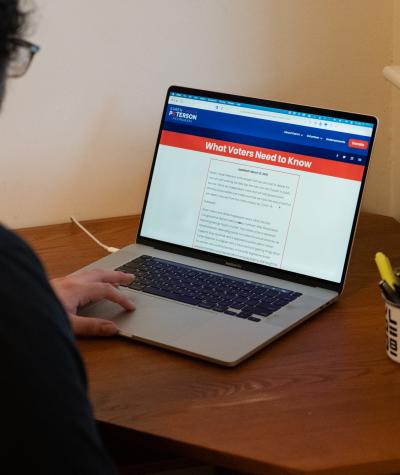Every election cycle, candidates and political parties use a legally dubious tactic known as “redboxing” to provide instructions and strategic guidance to supportive super PACs, 501(c)(4) dark money groups, and other supposedly “independent” groups that collectively raise and spend billions of dollars to influence elections.
Federal campaign finance laws prohibit candidates and political parties from coordinating with these groups, which must remain independent because they — unlike candidates and parties — are allowed to raise unlimited amounts of money, including money from corporations and unions.
That means candidates, parties, and their agents aren’t allowed to privately communicate instructions or guidance to super PACs or other “independent” groups spending money on elections.
For example, a candidate or their campaign staffer can’t make a phone call, write an email, or meet with a staffer for an allied super PAC to plot out strategies or messaging ideas that would maximize the candidate’s electoral chances.
But candidates and political parties have provided instructions and guidance to their “independent” allies through public comments — essentially allowing them to tell supportive super PACs how to help them if they shout it from the proverbial rooftops.
This coordination strategy, commonly known as “redboxing,” is well documented and has long been used to circumvent campaign finance laws. But redboxing has grown far more widespread than is generally understood, and when it’s used, it correlates with an increase in outside election spending.
The 2022 election illustrated just how prevalent redboxing really is and how deeply it affects our election system — underscoring the need for legal reforms.
As described in a new article published this week in the Election Law Journal, during the 2022 midterm elections, “over two hundred candidates for federal office employed redboxing . . . and these same candidates frequently benefitted from super PAC spending that was hundreds of times greater than candidates who did not redbox.”
These findings support the conclusion that the legally-mandated independence of super PACs and other outside spending groups is an illusion, as redboxing — among several other commonly employed coordination tactics — is widespread and allows candidates and parties to openly coordinate their activity.
Here’s how it works: a candidate’s campaign (or a party committee) will feature, on their website or some other publicly accessible media platform, a distinct page or section that uses signals and coded language intended to guide the messaging and targeting of allied super PACs’ ad spending in support of the candidate.
Sometimes these pages even provide research materials and citations, along with stock images of the candidate or “b-roll” video for super PACs to use in their ads.
The arcane, technical wording and the specificity of the requests featured in redboxing is clearly aimed not at voters but at super PAC operatives to tailor the messaging content.
For example, a candidate’s website might feature a “Media” page or a colored (traditionally red) box with text like this: “AAPI voters need to immediately see on in-language TV, CTV/OTT (streaming), programmatic digital and YouTube and immediately read in mailboxes [that the candidate] will continue to fight for access to reproductive healthcare.”
To the average voter, this would likely appear to be a strangely worded communication. But to super PACs and other “independent” groups, this is a clear instruction for a specific electoral message, targeted to a particular subset of voters, to be disseminated on certain media channels, within a specified timeframe.
This type of candidate-super PAC coordination is legally prohibited because it can foster real or apparent corruption if it appears that a candidate is beholden to wealthy special interests, and, moreover, it undermines everyday voters’ right to have a meaningful voice in our government.
Super PACs and other outside spending groups are heavily financed by wealthy special interests, like corporations and billionaires, seeking to elevate their policy goals and preferences.
Coordinated election spending allows their money to be used to directly underwrite and support federal candidates, resulting in wealthy special interests having more power and influence.
The upshot is that special interests drown out the voices of everyday Americans in the political process.
Solving this problem will require a robust effort to curtail coordination, including redboxing. As documented both in the new Election Law Journal article and in CLC’s reform work, recent laws at the municipal level directly address redboxing and reduce the power of outside spending groups and their special-interest backers.
For now, it is unclear when similar federal laws will follow — although federal legislative proposals to tackle coordination have been proposed. Hopefully, in the near future, Congress will take decisive action to end redboxing and other coordination tactics that undermine voters and diminish their voice in our elections and in our government.

